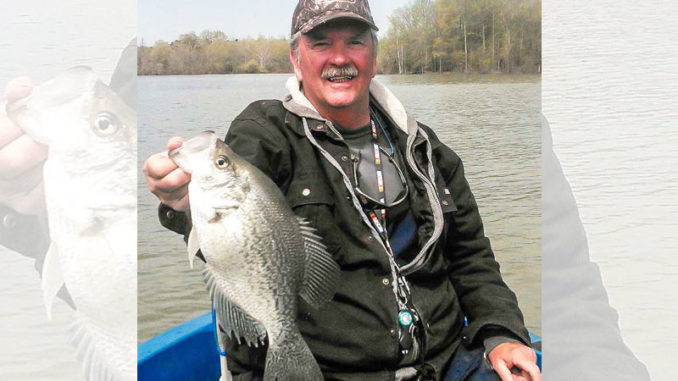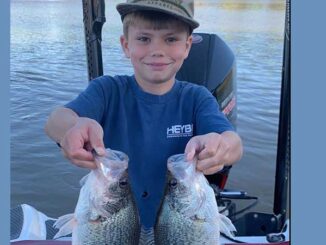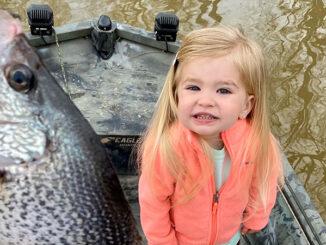
Sunlight, wind direction play key roles for crappie this month
According to veteran fisherman Rod King of Durham, N.C., crappie fishing at Falls of the Neuse Lake this month hinges on sunlight and wind direction. While persistent cold fronts will keep fish buried in the river channel, King looks for three or four days of south wind and sunshine to move slabs into the creek arms much earlier than many anglers might think.
“I don’t care how cold it is outside,” said King, who directs The Big Eye Crappie Man tournament series. “The sun does wonders to that water. With the sun low in the sky and the days getting longer, it’s going to heat up the north-facing creeks like Ledge Rock faster, and the south wind will blow that warmed water back up into those creeks.”
When this happens, King heads to the back of one these creeks — normally in the mid-lake section between the Cheek Road bridge and NC 50 — to check water temperatures. If he reads 40 to 44 degrees, King puts out an 8- to 16-rod tight-line spread of 16-foot rods. Staying close to the middle of the creek, he may start in as little as 2 to 3 feet of water. He’s looking for crappie sunning like a snake on a rock, taking advantage of the warmest water in the lake. Although the water is temptingly shallow, crappie will not begin to spawn until the temperature is much warmer.
Take it slow
King “oozes,” as he says, running his trolling motor just high enough to make forward progress so the crappie have enough time to grab his 1/8- to 1/16-ounce jigs and minnows. The lures will hang straight down despite the light weight. King prefers chartreuse or orange jigheads on sunny days and black or blue in darker weather.
“They might stay back there a couple of weeks, and in comes a cold front that runs them out,” he said. “They may try to go back to 15 or 20 feet, but they aren’t going be able to stay, because their air bladder has gotten used to being in 3 to 5 feet. They’ll run all the way out to the river channel and still be 3 to 5 feet deep. If the cold fronts continue, they’ll slowly sink back down.”
King will run his rigs in the shallow stump fields lining the river channel until the crappie move deeper into the channel. Then, he continues as he did before the warm front, going low and slow as he maneuvers his jigs a couple of feet above the crappie he’s marking in 15 to 20 feet of water, typically in the channel bends.




